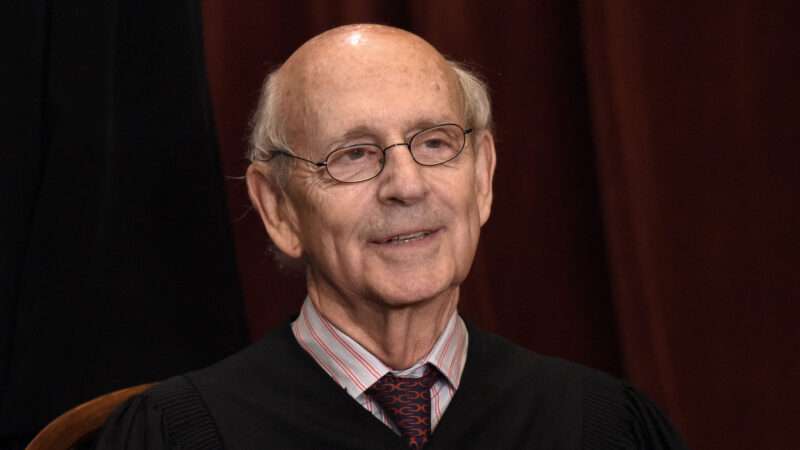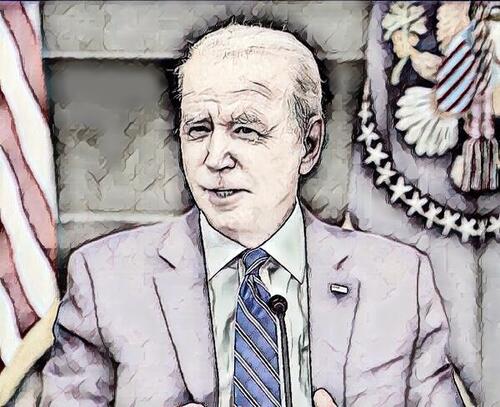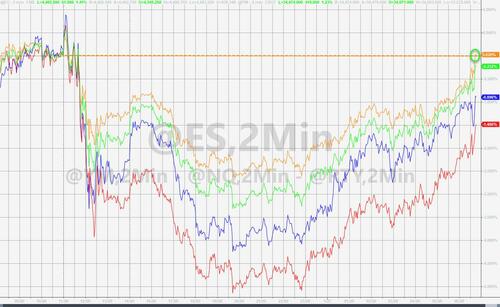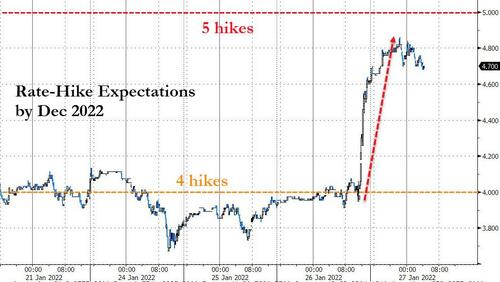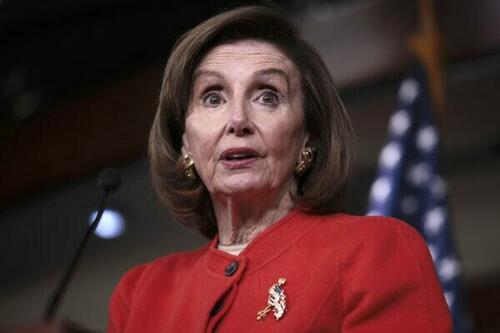Is crime up or down? It’s complicated. We’ve been hearing a lot of panic lately about crime in San Francisco, often offered in service of some political ends. Folks suggest that criminal justice reform measures—or mere demands for them—make America more dangerous. That liberal/progressive policies are driving social unrest and violence. That police need more money and governments need more ways to invade privacy.
But in San Francisco—and a number of other cities, large and small—crime is actually down from pre-pandemic levels. And in the Bay Area and other areas around the country, crime data are much more mixed than much of the moral panic would have you believe. Some crimes are up from last year but down from 2019 and preceding years. In a lot of places, homicides are up but overall violent crime, and/or other types of crime, are down.
According to the latest data out of San Francisco, violent crime in 2021 was up 1 percent over 2020 levels, and property crimes were up 11 percent. But the crime rate in 2021 was still lower than crime rates in 2014 through 2019.
“From 2014 to 2019, between 56,000 and 63,000 total violent and property crimes were recorded. In 2021, there were a total of 49,685 recorded crimes,” SFGate.com reports.
Rapes and robberies last year in San Francisco were at their lowest level since 2014. “We had 204 rapes reported last year which is a little bit below where we were in 2020. We saw a significant decrease between 2019 and 2020,” San Francisco Police Chief Bill Scott said at a press conference. “We ended the year with 2,242 robberies, which was a slight decrease from the previous year.”
Burglaries were up 40 percent from 2019, but down from their 2020 levels. Homicides were also up from 2019 levels, but the same as they were in 2017 and lower than in 2016.
In the Bay Area, “many cities — San Jose and Berkeley, for two — enjoyed a second consecutive year of decreases in property crime. And even those that endured year-over-year increases still have not risen back to pre-pandemic peaks,” notes The Mercury News. “Oakland saw a 7.5% increase in all property crime from 2020 but is still down 12.3% overall from 2019.…Even Walnut Creek — where a mid-November mass attack on a downtown Nordstrom reverberated nationwide — has seen property crime decline 9% from two years ago.”
All of this is to say that the narrative of a recent spike in crime across the board is just not accurate. And that’s not just true for San Francisco, but other areas around the country as well.
Trends mirrored elsewhere.
Violent crimes and property crimes are down in Boston.
“Cincinnati crime is at a 10-year low,” reported WVXU this week.
Overall crime was down 5 percent in Charlotte, the government there announced.
In Little Rock, Arkansas, “violent crime is trending down,” Little Rock Police Chief Keith Humphrey announced in late December.
“Violent crime trends down sharply in Jacksonville in 2021,” News4Jax reported.
In San Antonio, homicides were up in 2021 but overall crime was down.
In Amarillo, Texas, homicides were up—21 last year, 15 in 2020—but overall “violent crime decreased more than 10% in 2021 compared to 2020…The department also reported an 8% decrease in property crime in 2021.”
In Los Angeles, crime last year was up from 2020 but lower than in 2019. “There were a total of 204,205 crime reports in Los Angeles last year, everything from vandalism to stolen cars to homicide. That’s a 4.9% increase from 2020, when the city spent several months on lockdown. But it’s 5.4% below 2019,” reports Crosstown.
Crime downturns are far from universal, but they’re common enough to seriously complicate crime panic narratives. (Likewise, the idea that America is seeing a shoplifting crisis may be overblown.)
Anti-Asian hate crimes spiking? In other things-are-more-complicated-than-they-seem news, San Francisco is reporting a 567 percent spike in hate crimes against Asian Americans and Pacific Islanders (a factoid that has garnered headlines across the country). Preliminary numbers from last year show 60 such victims, according to San Francisco Mayor London Breed. This is up from nine victims in 2020.
However, more than half of these crimes—mostly vandalism and some robberies—were committed by one person. That leaves us with much less of a general increase in anti-Asian hate crimes and more of a one-man spree.
“More than 30 of the 60 incidents were committed by the same offender. An individual we arrested last August,” Police Chief Scott said. That person—36-year-old Derik Barreto—was arrested and charged with four counts of second-degree burglary, 27 counts of vandalism, 31 counts of hate crime enhancement, 31 counts of being armed in the commission of a felony, and four counts of possession of burglary tools.
Breed blamed San Francisco’s rise in anti-Asian crimes on former President Donald Trump and his rhetoric around China and COVID-19. But as with previous “hate crime spikes” attributed to Trump, there’s not necessarily any evidence for this. And if it was the case, why did the number spike in 2021, not 2020?
What actually did change in 2021 was more focus on anti-Asian hate crimes, from San Francisco leaders and media and press around the country. For instance, there was a concerted push in San Francisco last year to get people to report hate crimes.
That the increase in anti-Asian bias incidents comes as people have been especially attuned to hate crimes in general and anti-Asian hate crimes in particular suggests a) more people may have come forward about incidents they normally wouldn’t have and b) police and prosecutors may have been more likely to categorize things as hate crimes than they did before.
(For more on anti-Asian hate crimes and hype, see my feature from Reason‘s October 2021 issue: Do We Really Need New Anti-Asian Hate Crime Laws?)
FREE MINDS
Substack pushes back against calls to ban certain sorts of content or writers. “As we face growing pressure to censor content published on Substack that to some seems dubious or objectionable, our answer remains the same: we make decisions based on principles not PR, we will defend free expression, and we will stick to our hands-off approach to content moderation,” the company’s co-founders write. “While we have content guidelines that allow us to protect the platform at the extremes, we will always view censorship as a last resort, because we believe open discourse is better for writers and better for society.”
FREE MARKETS
New Yorkers are fighting for the right to get legal advice from nonlawyers. “Rules in New York, as in most states, forbid practicing law without a license, and giving individualized advice on how to respond to litigation is generally considered practicing law,” notes The New York Times. A nonprofit called Upsolve is challenging that practice:
On Tuesday, Upsolve took a step aimed at undoing the catch: It filed a lawsuit against the state attorney general’s office in federal court in Manhattan, arguing that barring nonlawyers from giving the kind of basic advice Upsolve would teach them to offer would violate the First Amendment….
Upsolve says a ruling in its favor would clear the way for thousands of lay professionals — social workers, clergy members, community organizers and the like — to help correct a gigantic imbalance in the legal playing field.
QUICK HITS
• Supreme Court Justice Stephen Breyer is retiring. People have already begun speculating about who President Joe Biden will nominate to replace him:
• Researchers have “identified biological factors that might help predict if a person will develop long Covid,” notes The New York Times.
• San Jose “voted Tuesday night to require gun owners to carry liability insurance in what’s believed to be the first measure of its kind in the United States,” the Associated Press reports.
• What homeschoolers knew before everyone else.
• ‘The typical U.S. home spent less than two weeks on the market in December, while home prices were up nearly 20% at the end of the month from a year earlier,” according to The Wall Street Journal. “In a testament to unmet demand, Redfin reported average U.S. rents saw their largest annual increase in December since February 2019, rising over 30% in nine major metro areas in December year over year.”
• The Federal Trade Commission will vote today on “nutrition labels” for broadband internet service.
• More book banning:
• The case against masks at school.
• “Much of Biden’s first year has been a simple continuation of his predecessor’s wrongheaded approach to U.S. trade policy,” writes Scott Lincicome, examining how Biden’s first-year trade record holds up to expectations.
• “Jex Blackmore, a Detroit activist and artist…ingested a mail-order abortion pill during a live interview with Fox 2′s Charlie Langton on Sunday,” MLive.com reports.
• Reason‘s Peter Suderman has more on the study on state-funded pre-K education that we mentioned in Roundup yesterday.
• More on the America COMPETES Act:
The post Crime Is Down From Pre-Pandemic Levels in San Francisco (and Other Cities) appeared first on Reason.com.
from Latest – Reason.com https://ift.tt/3Hb1BN0
via IFTTT
